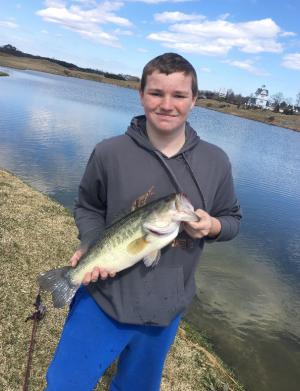Ever since the preliminary report from the striped bass stock assessment was released, the various online fishing sites have been on fire with opinions as to what the results mean and what actions the Atlantic States Marine Fisheries Commission should take to save the rockfish. Since I know just about as much, and perhaps just a little bit more, of the history of striped bass management than a few of those who have offered their opinions, I feel free to offer my own.
First, the striped bass population is currently overfished, and overfishing is occurring by the standards set since the population crash in the 1970s and 80s. The current situation is not even close to what we faced back then when striped bass were on the brink of becoming economically extinct. That means there were so few left that the money spent trying to catch one was not worth the result.
The Maryland Juvenile Striped Bass Index has been conducted since 1954 and is considered the standard for determining the success of the striped bass spawn for each year. The index is determined by visiting 22 sites three times a year. The sites are located on the Choptank, Nanticoke and Potomac rivers and the Upper Bay. The fish are collected with two sweeps of a 100-foot haul seine. The young-of-the-year stripers are counted and then an average for all the sites are presented on a chart.
Over the years, the mean average has been 11. Beginning in 1972 until 1989, the mean average stayed well below 11 and the striped bass stock crashed. Some of us believe then Gov. Schaffer of Maryland may have had a hand in the well above average in 1989, as the only site that was high was Hambrooks Bar, a location never before used in the survey. The governor had promised the watermen he would reopen the rockfish season and he kept his word.
The following year, 1990, the YOY fell very close to zero, then began an upward trend that has hit 10 dominate year classes, including 2015. Unfortunately, 2016 was another bad year followed by 2017 that was above average and 2018 that hit 14.8.
The problem we face today is quite different than what we faced in the 70s and 80s. There are lots of stripers out there, but the spawning stock biomass is low. This is made up of the large females who spend most of the year in the ocean, returning to the rivers and bays in the spring to spawn.
The second problem is the very high mortality of released stripers by recreational fishermen. The release mortality is 48 percent of the total while the retained mortality is only 42 percent. In other words, we kill more stripers by releasing them than we do by keeping them.
Then you have the problem of anglers who, because they can’t catch any, believe there aren’t any stripers. In Delaware, we used to have pretty good fishing every fall, working the rips between Cape May and Cape Henlopen. You could troll, jig or drift with live eels and stand a decent chance of connecting with a keeper rockfish. That is no longer the case. Last year, I think I recorded two rockfish caught in the Rips. The closest the fish came to Delaware was Wildwood, N.J.
Why did the stripers change their migration pattern? I have no idea. It may be just a coincidence, but it seems to me the change happened right after Hurricane Sandy. The excellent fishery we had in Virginia also ceased right after the same storm.
No question the stripers have moved farther offshore into the Exclusive Economic Zone, where fishing for them is against federal law. There have been movements to have that law rescinded, but that is unlikely.
Exactly what the outcome of the May meeting of the ASMFC will be is unknown, but I can assure you the discussions will be heated.
Fishing report
A few small rockfish were caught and released out of Indian River Inlet by anglers tossing plastic swim shads during the period between incoming and outgoing current. This is the first sign of life from there this year.
White perch have been caught from the tidal rivers and creeks on bloodworms, nightcrawlers, grass shrimp, shad darts and small minnows. The fish are here on one tide and there on the next.
When boats can get to the inshore wrecks and reefs, they find some tog. The bite remains light and slow, but most anglers are able to catch enough for dinner.
The restocking of Newton and Tidbury ponds seemed to be very successful. I had glowing reports from Newton Pond, where a father and son had their limit in short order.
























































